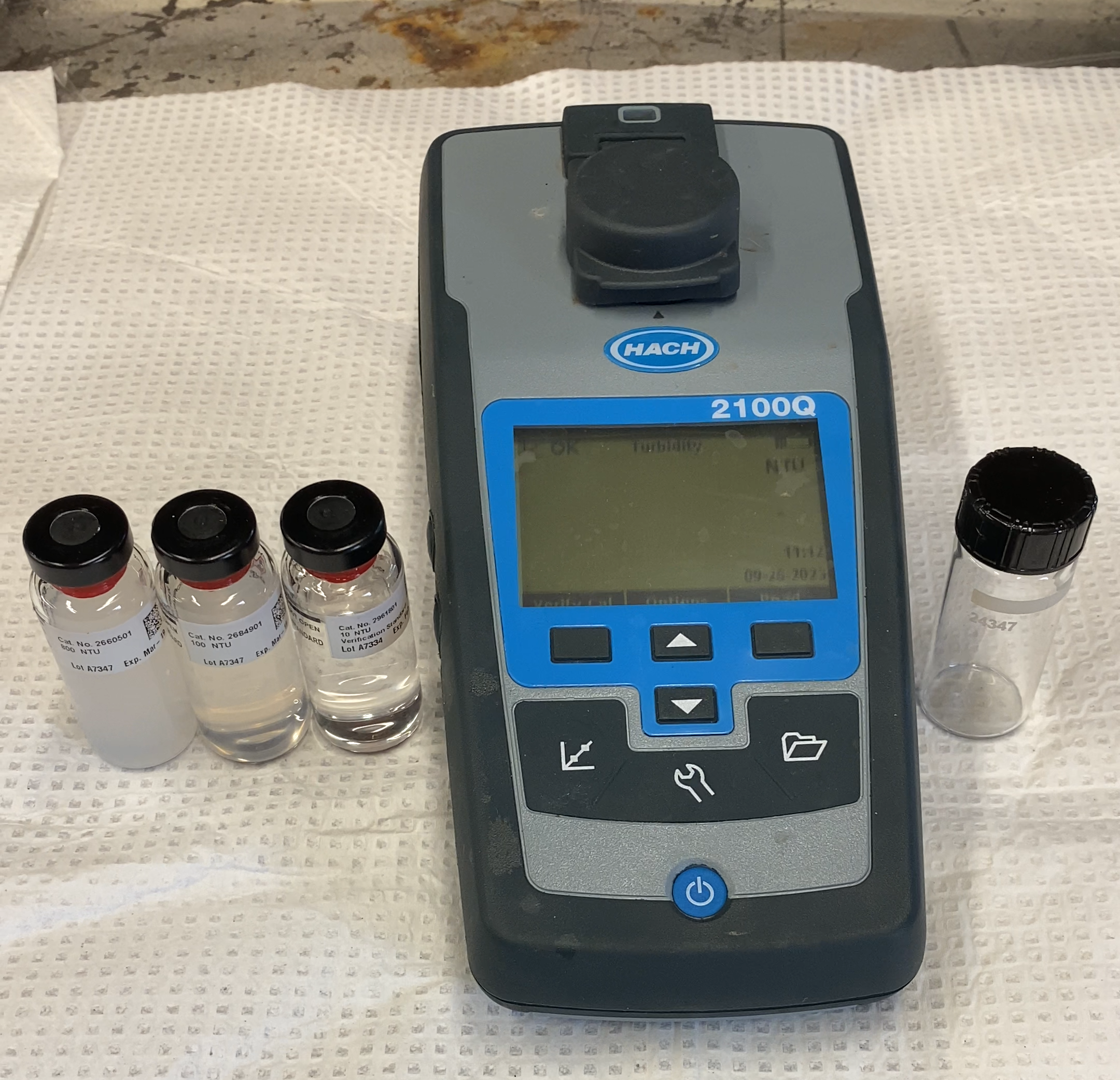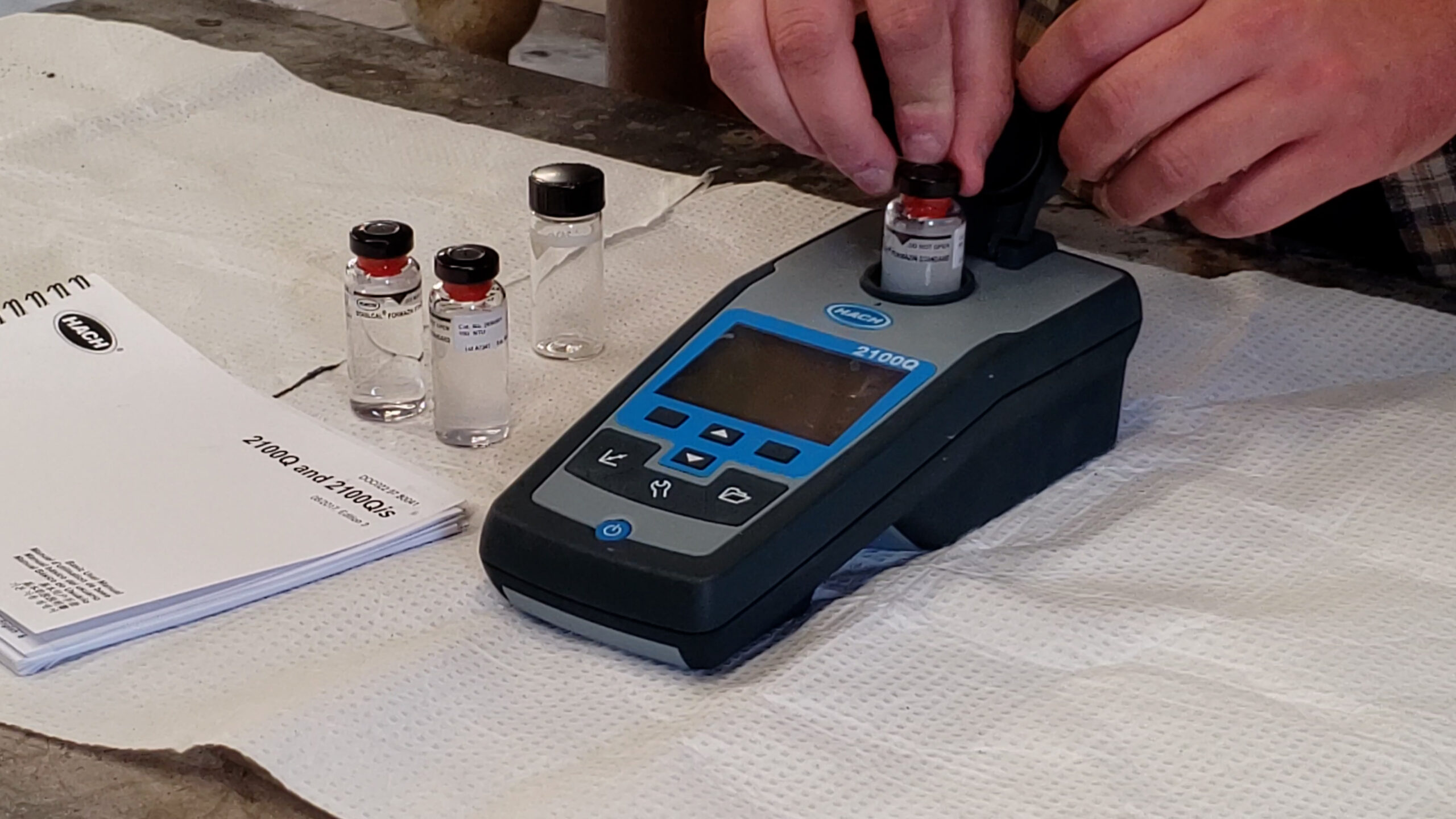Turbidity is the measurement of the cloudiness of our stormwater generally caused by material that washes off the landscape and becomes suspended in our stormwater. Turbidity is easy to measure and the equipment is relatively inexpensive, so it is one of the few water quality analyses that we can do in-house. This article aims to show you the proper sampling and measurement techniques to ensure accurate turbidity results.
1. The Equipment
The device used to measure turbidity from our stormwater is called a turbidimeter. Turbidimeters can come in several form factors from large benchtop units commonly found in a dedicated laboratory to small battery-powered units that are water-resistant and field-friendly. These smaller units are what are commonly used for sampling for your stormwater permits, and are fairly simple to operate. These units come with dedicated sampling cuvettes that hold the water sample for analysis and are sized to specifically fit your unit. Your unit will also require calibration standards that come in their own dedicated cuvettes. Other dedicated Turbidity equipment may include oil for your sample cuvettes and a microfiber cloth. Both of these are used to reduce false readings from smudges and scratches on your sampling cuvette.

2. Equipment Calibration
Calibrating your equipment is a critical step in ensuring quality results from your turbidity sampling. This process may vary slightly depending on the turbidimeter you have, however, most processes involve running a calibration program that analyses multiple calibration standards and adjusts its readings accordingly. This process doesn’t take much time and should be done frequently. If you are sampling quarterly, you should calibrate your equipment before every sampling event. If you are sampling more frequently, a simple verification that your readings match your calibration standard may be sufficient between calibrations.

3. Taking your reading
Your turbidity reading is measured by quantifying the amount of light that is scattered in your sample. The more turbid the sample, the more light will be scattered. This reading is measured in Nephelometric Turbidity Units or NTU. A higher NTU reading correlates to cloudier (more turbid) water. It is critically important that your sampling cuvette is clean and free of scratches or fingerprints. A muddy fingerprint or scratched cuvette can easily cause more light refraction resulting in a reading that is falsely reading higher NTU values. This could easily lead to benchmark exceedances and costly corrective actions.
Make sure your sampling cuvette is free of smudges and fingerprints by cleaning it with a microfiber cloth and holding it by the cap as opposed to touching the glass where the reading will be taken. Many turbidity kits will come with silicone oil that is intended to coat the sample cuvette to smooth out any imperfections. Check your manufacturer’s instructions on the specific sampling protocols.

For more video content covering a wide range of stormwater topics, please visit our YouTube page!



